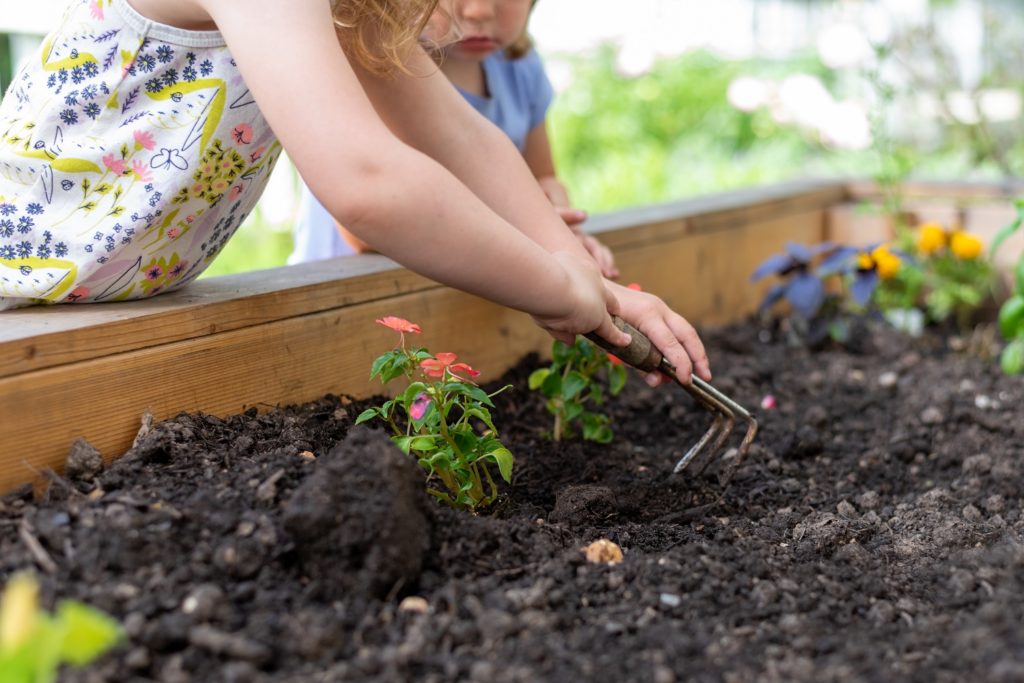Are you looking for a way to improve your gardening experience this year? If so, you might want to put raised garden beds at the top of your gardening essentials list. There are many benefits to using raised beds over in-ground gardens, so let’s go through a few of them.

1. More Control Over Soil Type and Quality
Gardening in raised beds means you have much more control over the type and quality of your soil. Depending on the climate where you live and what your native soil is like, in-ground gardens are often affected by less-than-ideal soil conditions. Existing soil may be too shallow, rocky, dry, or even contaminated with pesticides.
Raised beds give you the option to choose a quality soil that is rich in nutrients, the right texture for root growth, and allows for proper drainage—giving your plants and vegetables their best chance to thrive.
2. Control Over Soil Depth
When choosing or building raised beds for your garden, you’ll want to consider the depth. In most cases, the more room a plant’s roots have to grow, the larger and healthier the plant will be. With control over the depth of your soil, there is no need to worry about the condition and depth of your native soil as you would with an in-ground garden.
It is generally a safe rule of thumb to make raised beds at least 1 foot tall. If the desired plants enjoy more room for root systems (such as kale, peppers, and tomatoes) or the bed is placed on a solid surface (such as a patio), a depth of at least 2 feet is recommended.
3. Less Maintenance (and Weeding) Required
One of the best things about raised garden beds is that they typically require much less maintenance than in-ground gardens. The walls of raised beds keep out many kinds of weeds, and there are also other preventative measures you can take to stop invasive weeds from growing up into the soil from below. The ideal soil used in raised beds is also much less likely to contain weeds or weed seeds, unlike existing soil in your yard.
4. Better Drainage
Improper drainage is another gardening problem that can be solved with raised beds. Because the plants in raised beds are isolated above the ground, their water intake is easier to regulate. As long as the raised bed is not fully enclosed and allows for water to drain, it is unlikely that your plants will experience overwatering and/or root rot attributed to bad drainage. Raised beds also offer some protection against flooding from heavy rains.
5. Fewer Pests
Another benefit of raised garden beds is that their tall walls tend to provide additional defense against garden pests, such as slugs, rodents, and rabbits. Extra liners can be installed to prevent underground pests like moles and gophers from accessing your plants from below, and nets or other barriers can be added on top to keep out birds or deer if necessary! The height also creates an obstacle for dogs who tend to use your garden as their personal bathroom or dig spot.
6. Versatility
One of the best things about raised garden beds is that they can be used in just about any situation. They are great for small backyards with limited in-ground gardening space, they can be used in drier climates that don’t have ideal native soil, they can be built in urban areas on top of concrete or gravel, they can help provide organization and efficiency for a large garden, and more!
7. Better Accessibility
Finally, raised garden beds can help make gardening more accessible for people with disabilities, limited mobility, or joint or back pain. Not only are raised beds typically arranged to be accessible from a clearly defined path, but they can also often be accessed while sitting or standing. At the proper height and width, raised beds can be a great accessibility solution in the gardening space.
Are you ready to give raised garden beds a try? Contact your local garden supply center today if you have any questions or would like some tips on getting started. Happy gardening!
